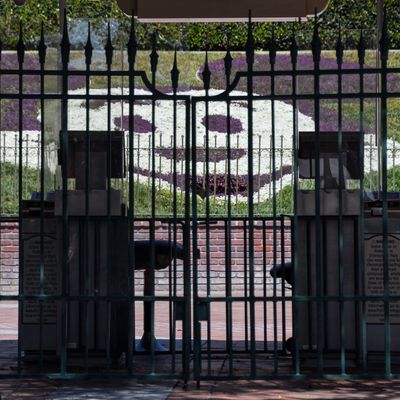
Around the world, the Walt Disney Company’s theme parks have reopened with modified operations to reduce the risk of COVID spread — except for the parks at the Disneyland Resort in Southern California, which has remained closed for more than six months. That’s because the state of California has ordered theme parks to stay closed. Disney and its peers in the theme-park business had been pushing Governor Gavin Newsom to issue guidelines about how the parks could reopen — but once they saw the draft guidelines late last week, they changed their position and urged him to delay their issuance, because the guidelines as written were likely to prevent the parks from reopening for several more months.
At issue is a rule that would keep theme parks in a given county from reopening until COVID spread has reached a level the state deems “minimal” — that is, less than one new daily case per 100,000 residents and a test-positivity rate of 2 percent or less. Only three rural counties in the whole state meet that criterion. Currently, the rate of new diagnoses in Orange County, where Disneyland is located, is three times too high to meet the test. In Los Angeles County, home to Comcast’s Universal Studios and Six Flags Magic Mountain, it’s seven times too high. If you applied California’s standards in Florida, Walt Disney World would have to close. New York City and every suburban county in downstate New York would fail the test, too.
I think it’s entirely possible that California is right that theme parks ought to be shut until the epidemic abates. But the effect on employment is significant — Disney announced 28,000 layoffs last week as it became clear there was no end in sight to Disneyland’s closure, though some of the layoffs were in Florida, where Walt Disney World is open but with attendance numbers far below normal — and this development emphasizes two failures of our national COVID response. One is that the expiration of enhanced unemployment benefits makes it harder for Disney’s furloughed theme-park employees to wait for conditions to allow theme parks to reopen, creating more political pressure for a premature opening. The other is that the failure of virus control has forced longer interruptions to business activity than would have been necessary if we controlled the virus as countries, especially on the Pacific Rim, have done.
But even where virus control is better, it hasn’t been an easy road for theme parks. Hong Kong Disneyland closed in January, reopened in June, closed again in July, and reopened again in late September. Those parks that have reopened are operating at a much-reduced capacity — the Walt Disney Studios park at Disneyland Paris is currently open just five hours and ten minutes a day, from 10:50 a.m. until 4 p.m. Even when parks are allowed to reopen, it doesn’t mean that customers will be eager to return or that they will be able to operate anywhere close to capacity. For that simple reason, theme parks, like other businesses that rely on large crowd gatherings, are likely to be among the last parts of the global economy to return to normal.





























